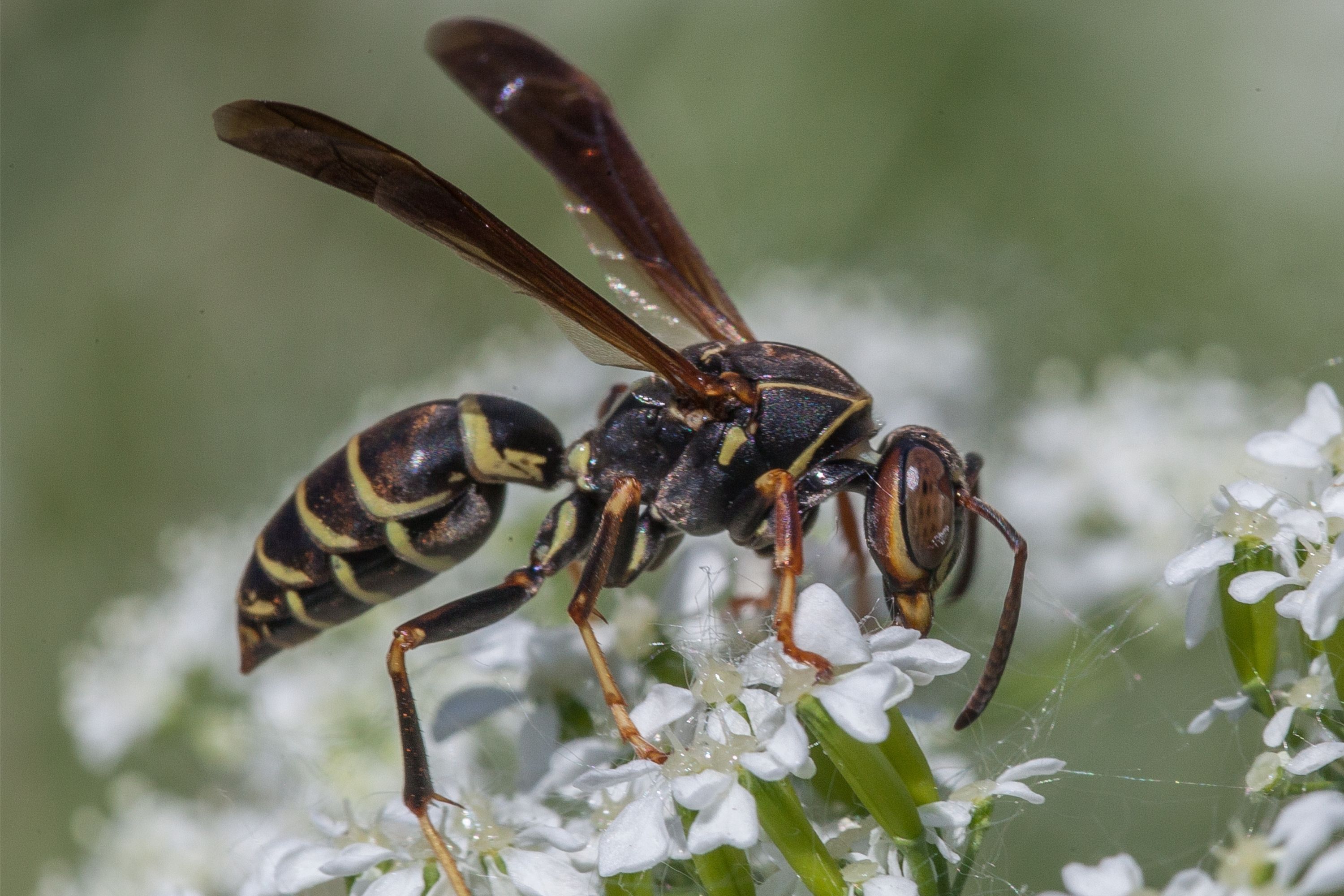Northern paper wasp
(Polistes fuscatus)

Description
Polistes fuscatus whose common name is the dark or northern paper wasp, is widely found in eastern North America, from southern Canada through the southern United States. It often nests around human development. However, it greatly prefers areas in which wood is readily available for use as nest material, therefore they are also found near and in woodlands and savannas. P. fuscatus is a social wasp that is part of a complex society based around a single dominant foundress along with other cofoundresses and a dominance hierarchy. The length of P. fuscatus often ranges between 15 and 21 mm (0.59 and 0.83 in). The fore wing length ranges between 11.5 and 17.0 mm (0.45 and 0.67 in) in general, the fore wing of males is above 13.0 mm (0.51 in), whereas females have a fore wing length above 11.0 mm (0.43 in). Both males and females have rather slender bodies and have a waist that connects the thorax to the abdomen. The female has a venomous sting. The pain of its sting is commonly compared to being pricked with a large needle, such of that of a tattoo. Like coloration below, length can also vary by season of emergence. The physical characteristics of the P. fuscatus are highly dependent on the geographic location of its habitat. Throughout the United States, three color pattern trends represent different regions throughout the country. The male is identified by its darkened apical flagellomeres in addition to its darkened dorsal surface of the apical flagellomeres that is common to other species of wasps. Northern females on the other hand are easily identified by the blackening of their entire bodies which may or may not have markings of other colors. Many southern P. fuscatus individuals, however, have additional markings and may resemble wasps of other species. The facial and abdominal markings of P. fuscatus are highly variable, including a variety of different patterns, such as small dots, long stripes, clypeus blotches, yellow abdominal dots, upper clypeus stripes, and combinations of both clypeus edge and tip colorations. Furthermore, some wasps have these facial and abdominal patterns in brown and black instead of yellow. These marking colors, however, are often influenced by the geographic location of the wasp. Polistes fuscatus's distribution along the eastern half of North America ranges from southern Canada to the United States. The most northern extent of its range is Chilcotin, British Columbia, and it reaches as far south as Texas and Florida.
Taxonomic tree:







